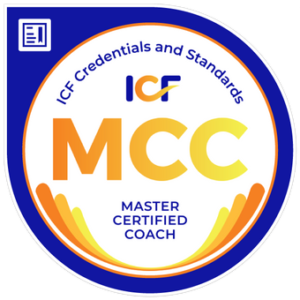
Now more than ever, business leaders like you are being stretched in ways we never could have seen coming. From charting the unknown in 2020 during the pandemic to now adjusting to the needs of a transitioning virtual force in 2021. How you engage the needs of your team is more important than ever.
Your business depends on it.
Spending last year in a virtual setting has caused many changes in the workplace. Of the needs that have surfaced, burnout among leaders and employees is now at record highs. Here are a couple of the trends we’re seeing:
- Nearly 60% of leaders reported they feel used up at the end of the workday, which is a strong indicator of burnout. [1]
- Approximately 44% of leaders who feel used up at the end of the day expected to change companies in order to advance; 26% expected to leave within the next year. [1]
To mark an effective plan against burnout, we have to figure out exactly what we’re dealing with.
Burnout was first coined by Dr. Herbert Freudenberger [2], a psychologist in the 1970’s who noticed burnout in two areas. First, as a symptom of drug use in his patients and later, a consequence for those working with these patients. His patients would become “fried” from drug use. And those working with them would exhibit similar behavior, either from compassion fatigue or other responsibilities from the job.
Christina Maslach further researched workplace burnout and defined it as a “work-related syndrome involving emotional exhaustion, depersonalization, and a sense of reduced personal accomplishment” [3].
From Maslach’s definition, we can break burnout into 3 main components: depletion (emotional exhaustion), disconnection from people (depersonalization), and deflation (reduced personal accomplishment).
Let’s look deeper into each of these components of burnout.
1. Depletion (Emotional Exhaustion)
Depletion is what it sounds like — the absence of energy or fuel. We can think of this as depletion versus fullness of energy. To avoid burnout, we want our bucket full of energy. There are four key areas we can see the signs of a depleted bucket: physically, emotionally, cognitively, and behaviorally.
Physical depletion shows up through an increase in heart rate, a heightened startle response, sleep disturbances, crying spells, weepy behavior, and so on. Emotional depletion symptoms give way to anxiety, stress, fear, exaggerated responses, or mood swings. Cognitively you might observe a decrease in focus, motivation, or concentration. Behavioral depletion can look like forgetfulness, accidents, or work problems.
As a business leader when you see any of these signs in your team, ask yourself, “How can I help fill their bucket?” What strategies, routines, or touchpoints can you put in place to address depletion in your team? Is there work you can outsource? Do you need to hire more staff? Ask yourself how you can best engage and empower your team in their strengths to accomplish their work without burnout.
2. Disconnection from People (Depersonalization)
We’ve all felt disconnected from the people we work with in some way or another over the last year. With remote working, social distancing, virtual connection, and self-isolation this last year, most of us are just now getting into the habit of seeing others regularly in person.
People experiencing disconnection from others may pull from relationships, remain in toxic relationships, or not be receiving the emotional and physical touches needed in healthy relationships. Instead of having sources for support, validation, and encouragement, people are left alone to cope in ways that may not be benefiting them — leading to further isolation, pessimism, and withdrawal.
This is the last thing you want for your team! Human connection is vital to the health of your workplace. As a business leader, the key question to ask yourself is, “How can I increase engagement with my people in their relationships?” This type of engagement requires intentionality, especially if your team is still working in a virtual setting.
In Gallup’s research with the Q12, some of the most important questions we ask deal with a person’s connection to specific people in the workplace and if there is a general feeling of support and freedom to open up about challenges. Consider implementing a group like the masterminds I facilitate that meet together for consistent encouragement, accountability, connection, and engagement.
3. Deflation (Reduced Personal Accomplishment)
Deflation happens when we feel like we’re losing the battle in life and work. Someone struggling in this area may feel hopeless and ask themselves questions like…
- How can I advance my career or income?
- Should I close my business?
- Should I get another job?
- What should I do next? And so on…
When it comes to deflation, the key is to maintain patient endurance. Meaning we must continue enacting those positive behaviors we know are helpful to both us and those around us. We want to encourage high achievement. Simple actions like eating healthy, taking care of your mind, body, and spirit are effective ways to enact patient endurance.
As a business leader, ask yourself, “How can I engage my team in patient endurance?” How can you encourage growth and advancement in your team? What opportunities can your team take advantage of that would encourage high achievement? Continued personal and professional development in this area will greatly increase your team’s sense of personal accomplishment.
How to Beat Burnout in Your Workplace
As we navigate the workplace in 2021, the effects of the pandemic to the workplace are proving to be challenging but there is hope.
The first thing to remember is you can’t beat something you don’t acknowledge. Take time to observe how burnout may be affecting your employees and teams. Don’t be afraid to ask yourself the hard questions and take ownership of your role as a business leader within the workplace dynamic. If something is falling through the cracks, lean into it and make a plan of action to promote health in your team.
Encourage daily routines that inspire high achievement and continued personal development. Be intentional about the relational connection among your team and for yourself. View this new work dynamic as an opportunity to advance yourself and your workplace.
The post-pandemic workplace may look different than we could have predicted, but it’s up to us as leaders to take this situation and turn it around for the good of our workplace.
What are some of your best practices to beat workplace burnout? Comment below.
My goal is to help you grow stronger, work smarter, and live richer in your business! Beating burnout is crucial to your success in these areas because your business depends on it.
Do you need more help maximizing the human potential in your workplace? Download my free Workplace Training Brochure. Here I offer resources on employee, leadership and business training, including how to manage stress and burnout.
Don’t forget to book your Ask Brent Anything call and let’s walk through how I can help you champion your people like your business depends on it.
For more information on beating burnout, check out my book Balance Matters: Turning Burnout Into Balance here.





